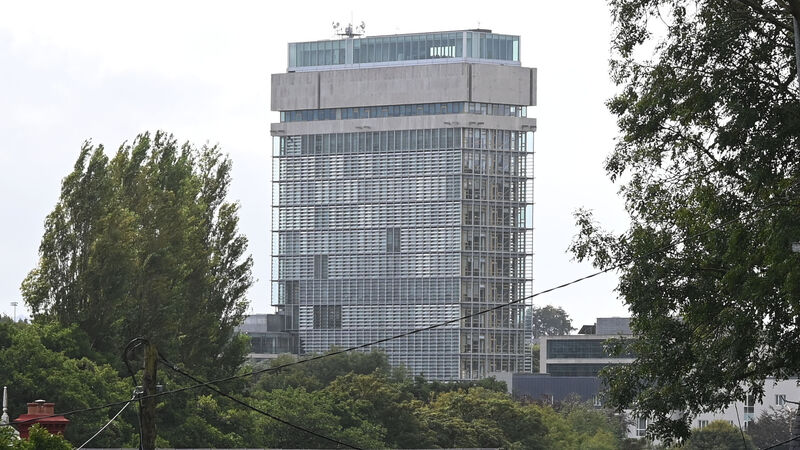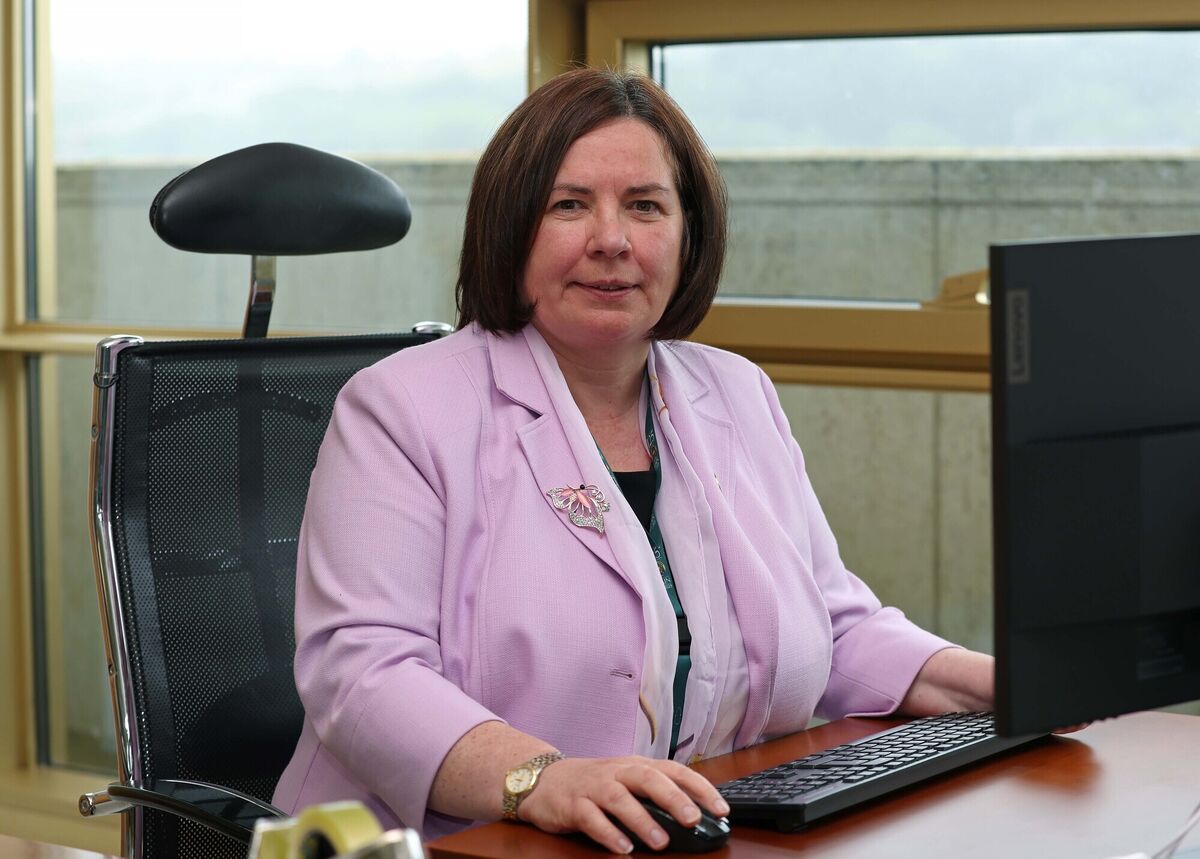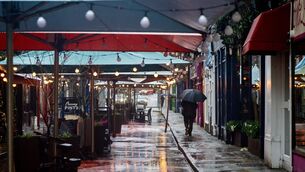Cork County Council approved its largest budget for next year but how will it be spent?

Where is the money likely to go across Cork county in 2025? Concubhar Ó Liatháin takes an in-depth look at the county council’s budget for next year. Picture: Denis Minihane.
If you want to know what your local authority is planning to do in the coming years, look at its budget.
Cork County Council chief executive Moira Murrell presented the budget for 2025 at a council meeting earlier this month.
Expenditure of €517.8m was proposed. This was reduced to €516m after a sought increase in commercial rates was rebuffed and replaced by a compromise figure.
This is the largest budget approved by the council and it will pay for the provision of between 1,200 and 1,500 services, and for the materials to repair council-owned homes and other property.
The bulk of the €516m will be taken up with salaries and the remuneration of those who provide the services, be they council employees or outside contractors.
A significant portion of the €60m increase from last year’s budget of €458m will go on meeting the costs of increased pay for the council’s employees, under pay deals to come in to force next year, while another portion will go on the cost of inflation.
As Moira Murrell explained in her foreword to the budget document: “The general inflation rate (January 2022 to October 2024) was 14.8% and the cost of energy to the local authority almost doubled, from 2022 to 2024.

“To put this in the context of operational budgets and frontline services, an additional €1.3m in expenditure has been provided for in civic-amenity sites between 2022 and 2025, representing a 9% increase as a result of inflationary pressures.
“Similarly, a 37% increase has been allocated to the street-cleaning budgets between 2022 and 2025, which is a €1m increase in that timeframe.
“This presents a key challenge, with pressure placed on provision of all our services and the need to find efficiencies to maintain delivery levels.”
As well as presenting a budget for next year — which looks at the expenditure planned on revenue issues and the day-to-day working of the council — a budget for capital spending over the next three years was also put before the elected members.
The proposal put to, and approved by, councillors will see the investment of €1.4bn over three years in current and potential infrastructural projects.
The biggest chunk — €656.6m — is to be invested in the provision of social and affordable housing, while a further €585.3m is to be spent on roads and transportation.
Councillors have say over very little in terms of the overall budget.
In the proposal put to them by the executive, while they were approving of spending plans for over €516m, their power related to the setting of the commercial rate.
In her preamble, the chief executive outlined spending plans for €4.7m of additional measures, which would be funded by the rates increase. These measures included €1.4m on town and village operational maintenance — basically, outdoor workers to do the cleaning and other jobs in our communities across the county; €200,000 for a fund relating to taking estates in charge; €300,000 for a fund to acquire land for strategic economic purposes; €1m for a fund to acquire land for housing; €1.5m for capital projects (such as public-realm projects in towns and villages); and €200,000 for relief-road design work.
Commercial rates
When the budget was decided, there was a lengthy debate about the commercial rate, which the council executive wanted to increase by 3%, but, following an intervention by councillors, a compromise increase of 2% was agreed.
Coupled with an abatement of 3.5% for the first €12,000 of a rates bill, this meant that everybody paying rates up to €20,000 would actually be better off.
And it also meant that the council executive had to adjust downwards by approximately €1.8m their 2025 spending plan, to €516m.
Councillors, faced with getting an earful from business owners over the rates increase, had to balance that headache with the prospect of getting criticised, as they have incessantly complained about the lack of council workers to carry out tasks, such as cleaning gutters and other work in towns and villages around the county.
The compromise allowed the elected members the comfort that additional outdoor workers would be employed in the new year, while also giving most rate payers — 90% of them — a better deal in terms of their rates bill in 2025 than they had had in 2024.
Housing
Housing is the highest priority across the country and also for Cork County Council.
Almost 25% of the €516m budget for the year will be spent in this sector and this includes an additional €15.5m for the Croí Cónaithe scheme — which grants up to €70k for people to renovate derelict or vacant buildings to turn into homes — as well as an extra €1.4m for ‘maintenance and improvement’ of existing stock.
Provision of emergency accommodation for those who are homeless will be maintained at the same level as last year, while it is also envisaged that the 800 social-housing units allocated to successful applicants in 2024 will be matched in 2025.
There were more than 1,500 applications for social housing in Cork county last year.
No meeting of the council will go by without complaints about the state of the roads and while there has been an increase in the budget, this is only reflecting on the rapidly increasing cost of fuel, electricity, and materials needed to maintain and improve the roads.
While the council is only responsible for the maintenance of local and regional roads within the county, allocations in previous years from the national government have fallen short of expectations, particularly considering the damage caused to roads in East Cork by Storm Babet in October of 2023.
The authority expects to reap a dividend of €270,000 from pay parking in town centres, but in the report to council, this is stated as being “dependent on realisation of parking income”.
One expenditure item that drew the attention of councillors at the budget meeting as they sought means of cutting costs to pay for other measures was €1.1m for advertising, consultation, meetings, printing, and Irish translation of the next county development plan, when the current one expires in 2028.
Environment expenditure
Under the headline of ‘environment’, expenditure of €55.5m is planned and this includes an increase of €800k for landfill, which takes in to account increased activity, the cost of disposing of materials, the increased price of energy, and loan charges.
A provision of €400,000 — less than 0.1% of the overall budget — has been set aside for the Climate Action Fund.
This, according to the council budget document, is “to reflect the council’s focus”.
In terms of the county’s eight municipalities, it’s a case of ‘as you were’: There’s no increase in their funding.
As the council document puts it, the total funding of €3.317m is being “continued in full”.
The other side of the balance sheet, the income, is also the focus of the budget.
The council is hoping to make €119.1m from fees for the provision of its up to 1,500 services, with a further €236.4m from grants and subsidies from central government. An additional €29.7m comes from the local property tax, while approximately €131m will come from rates.
The council has also included an “increased income of €16.4m” from its deal on boundary compensation with Cork City Council.
“The views of Cork City Council in relation to the indexation of the boundary compensation figure are noted,” it is stated in the budget document. “Per legislation and agreement, this amount has been included as a full recoupment for the 2025 budget.”
In other items of interest — though further down the priority list of the council — there is provision for an €80,000 increase in the grant aid for the arts in county, as well as an additional €80k hike for Culture Night.







 App?
App?





